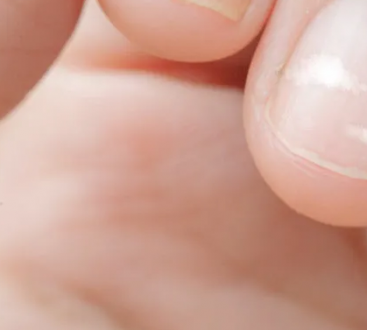Onychotillomania, also known as a nail-picking disorder is a prevalent but under-diagnosed condition characterized by self-inflicted harm to the nail unit. Repetitive rubbing of the nail fold or the use of objects like razor blades, scissors, or knives can be used for causing harm.
Onychotillomania is a mental disorder that causes people to hurt their nails and sometimes the skin around them. It is usually considered as both a psychiatric and a dermatologic disorder at the same time. Due to this overlapping, it is called psychodermatosis. It is a type of BFRBD (body-focused repetitive behaviour disorder).
Onychotillomania has been classified as an obsessive-compulsive condition in some circumstances (OCD). This disorder can lead to serious infections, melanonychia, or nail dystrophy which are very serious diseases and can cause irreversible damage.
Onychotillomania is linked to the following psychiatric problems:
- Depression
- Suicidal ideation
- Delusional disorder
- Impulse control disorder
- Body dysmorphic disorder
- Obsessive-compulsive disorder.
It is difficult to manage this condition due to its psychocutaneous character and its overlapping with psychiatric issues.
Onychotillomania Symptoms
Erythema, edema, and ulcerations are common onychotillomania symptoms. Along with the skin lesions, individuals have anonychia, with the nail bed almost entirely exposed and partially coated in honey-colored crusts and scales. The fingernails of the patient are severely shattered, broken, and extremely short, exposing the nail bed.
Onychotillomania Causes
Onychotillomania is a psychodermatosis caused by repetitive self-inflicted damage to the nail unit. The condition manifests itself as minor to severe abnormalities of the nail plate, which are frequently unusual. This disease is mostly triggered through the following events:
- The healing of an old wound or injury might become a triggering factor for this disease. The irritation or itching caused by the wound can trigger the patient and as a result, he or she starts picking nails.
- The other triggering factor is stress. During times of stress, the patient can release his or her tension by picking the nails and continuously repeating this behaviour.
Both adults and children suffer from skin-picking disorders. It can start at any time, but it is most common during adolescence or at the start of puberty. This disease mostly affects women more than men.
Onychotillomania Test
Nail picking is occasionally the outcome of nervous behaviour. This disease is diagnosed by psychiatric examinations. For a complete diagnosis, it is important to check all twenty nails regularly. A full-body skin examination is undertaken, including the scalp and secondary hair, to look for onychotillomania.
There are no laboratory tests required for the diagnosis of various BFRBDs. Physical examination, nonjudgmental questions related to the patient’s nail habit, and observation in the examination room play important role in the diagnosis of this disease.
After doing a physical examination, the doctor may inquire about the patient’s habits and the feelings that the patient has when engaging in this behavior. These emotions help evaluate whether the scabs or lesions the patient is picking are caused by a skin disorder or condition such as psoriasis or eczema.
Onychotillomania Treatment
Skin picking triggers can be identified with the help of a mental health practitioner. After knowing the triggers, different ways to stop this skin picking behaviour can be used. Skin-picking condition is treated mostly through medication and counseling.
A mental health professional assists the patient in resisting objects in the surroundings or on his or her body that triggers the phenomenon. Onychotillomania can also be treated by using gloves or sticky bandages to cover scabs or injuries.
The other type of therapy may involve teaching the individual to adopt better actions when he or she feels the urge to pick at the skin. Pressing a stress ball, solving a Rubik’s cube, drawing, or engaging in other activities that engage the hands are all examples of actions that can be utilized to quit picking.
The medications can also be utilized to treat this psychodermatosis. Different types of antidepressants are prescribed mostly by doctors. These pills include selective serotonin reuptake inhibitors and other medications, such as anticonvulsants and psychiatric treatments can also be prescribed by the mental health practitioner.
 Health & Care Information
Health & Care Information 


